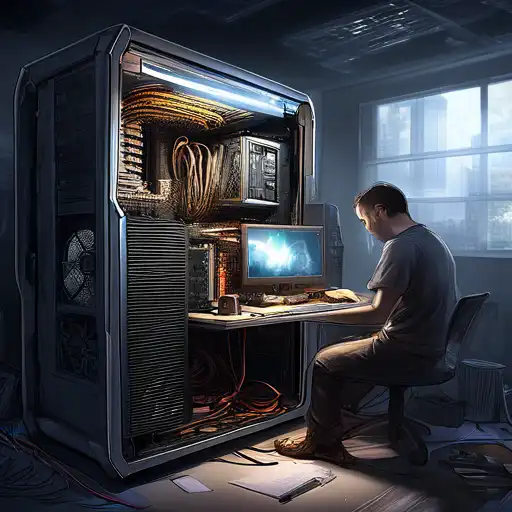Introduction to PC Building
Building your own PC can be a rewarding experience, offering both personal satisfaction and the opportunity to create a machine that perfectly suits your needs. Whether you're a gamer, a content creator, or just someone who appreciates the art of technology, this guide will walk you through the process of assembling your own computer from scratch.
Why Build Your Own PC?
Building your own PC allows for customization that pre-built systems can't match. You can select each component based on your specific requirements, ensuring optimal performance and value. Plus, it's a great way to learn about how computers work.
Essential Components for Building a PC
Before you start, you'll need to gather all the necessary components. Here's a list of the essential parts:
- Processor (CPU)
- Motherboard
- Memory (RAM)
- Storage (SSD or HDD)
- Power Supply (PSU)
- Case
- Graphics Card (GPU) - if not integrated into the CPU
- Cooling System
Choosing the Right Components
Selecting the right components is crucial for building a PC that meets your needs. Consider factors like performance, compatibility, and budget. Research each component to understand its role and how it fits into your overall build.
Step-by-Step Guide to Building Your PC
Now that you have all your components, it's time to start building. Follow these steps to assemble your PC:
- Prepare your workspace and ensure you have all necessary tools.
- Install the CPU onto the motherboard.
- Install the RAM into the appropriate slots on the motherboard.
- Mount the motherboard inside the case.
- Install the power supply into the case.
- Connect all necessary power cables to the motherboard and other components.
- Install your storage devices.
- If applicable, install the graphics card into the PCIe slot.
- Connect all case fans and install any additional cooling systems.
- Double-check all connections and components before powering on your PC.
Installing the Operating System
Once your PC is assembled, you'll need to install an operating system (OS). Whether you choose Windows, Linux, or another OS, ensure you have a bootable USB drive or DVD ready for installation.
Tips for First-Time Builders
Building a PC for the first time can be daunting, but these tips can help make the process smoother:
- Take your time and don't rush the process.
- Refer to the manuals that come with your components for specific instructions.
- Use an anti-static wristband to prevent damage to components from static electricity.
- Test your PC outside the case first to ensure all components work properly.
Where to Find Help
If you encounter any issues, there are plenty of resources available. Online forums, video tutorials, and the manuals that come with your components can provide valuable assistance. Don't hesitate to ask for help if you need it.
Conclusion
Building your own PC is an exciting project that can save you money and give you a deeper understanding of how computers work. By following this guide and doing your research, you'll be well on your way to creating a custom PC that meets all your needs. Happy building!
